The artistic Mr Mayhew
I have recently had the opportunity to look more closely at the almost 400 watercolours by Edward Mayhew that we acquired in 1990 and which are now available to view on our Vet History site
Edward Mayhew (1808-1868) was the brother of Henry Mayhew, founding editor of Punch. It is thought he spent his early years in the theatre before enrolling at the London Veterinary College in 1843 when he was in his 30s. He qualified as a member of the RCVS on 6 February 1845 and became a member of RCVS Council just over a year later.
Reports of the meetings in the three years Mayhew spent on Council show him to be a man who was not afraid to speak his mind, especially where the Professors at both the London and Edinburgh veterinary schools were concerned. His rather short obituary in The Veterinarian (November 1868 p810) says very little about him except “He was well known as the author of several veterinary works.”
It is for two of these veterinary works, Illustrated horse doctor and Illustrated horse management, that the watercolours were prepared and most of them have counterparts in the published books.
The drawings, which were converted into woodcuts for publication, reveal a man of no small artistic talent.
The collection includes illustrations: of diseases including the stages of laminitis
methods of treatment – inserting a tube into the stomach of a horse
and show how horses, and their keepers, should be housed
They also reveal something of the social conditions at the time – including this ‘Peep into the Grooms Home’
My favourites are the ones which show Mayhew’s sense of humour – for example this drawing titled ‘Never mount a strange horse in a crowded place.’ I particularly like the ‘flying’ dog on the bottom right!
Update (25/8/15)
Whilst researching for my lastest blog post on Mayhew I found an interesting account of the Mayhew family in George Hodder’s Memories of my time: including personal reminiscences of eminent men (London: Tinsley Brothers, 1870)
The section on Edward Mayhew (pp58-62) gives information on his health when producing these illustrations and mentions that his brother Julius, an architect, helped with the illustrations and designs for the stables.
Links to digitised images
Images used in Illustrated Horse Doctor

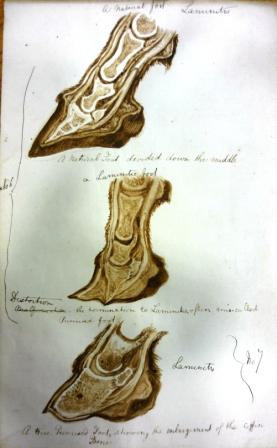
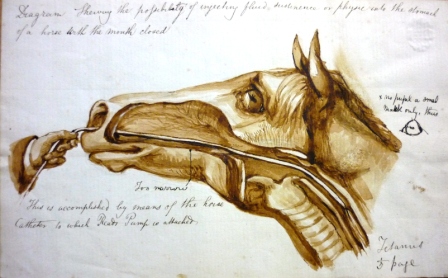
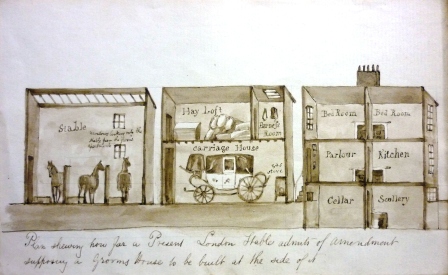
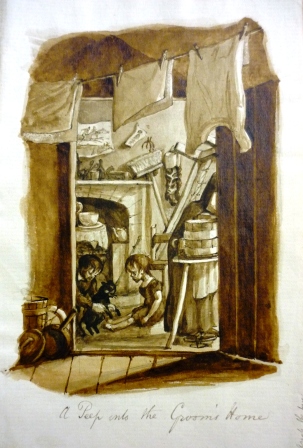
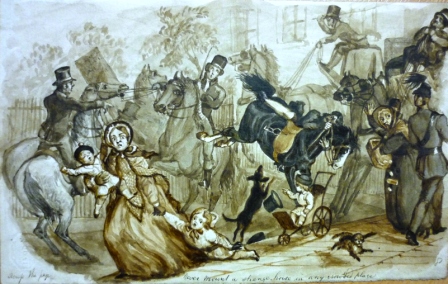
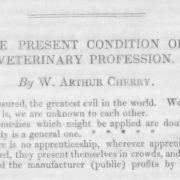

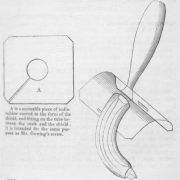
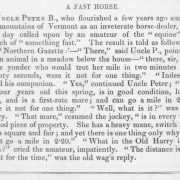
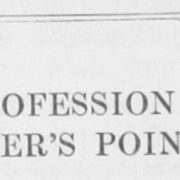
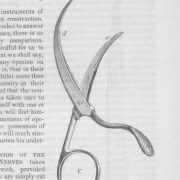
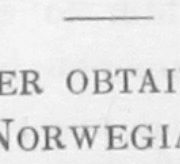
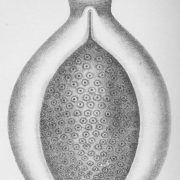
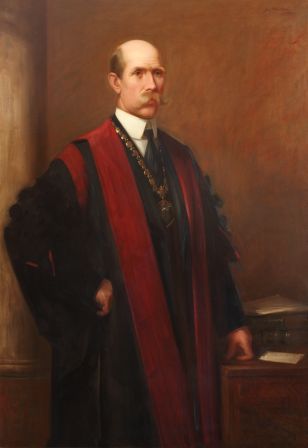
How special! I’d love to be able to read the comments that he scripted on these watercolors, especially on the laminitis one. He seems to be suggesting that in the advanced chronic stage, the coffin bone (distal phanlanx) enlarges? Perhaps the note explains why he illustrated the bone that way.
The stable plan seems to show the three structures as unattached; I wondered if this compact design might be for urban addresses? Mayhew seems to be recommending light and a high ceiling for air circulation for the horses, but the poor groom has to trudge up and down stairs to store the harness…and if there is a trap door for lowering hay from the loft, it would land on the carriage. He must have had an elaborate plan to explain these aspects of the plans.
Thanks so much for sharing these. I’d love to see them sometime!
The watercolours are small (roughly postcard size) and it is hard to read the comments on them. Reading from the top down the comments on the laminitis drawing appear to say ‘A natural foot’ and then under that illustration ‘a natural foot divided down the middle’ , the next illustration reads ‘a laminitic foot’ then ‘distortion (malformation is crossed out) the [???] to laminitis, often miscalled pumiced foot , the final illustration reads ‘A true Pumiced foot showing the enlargement of the coffin bones’
As to the stable illustration – Illustrated horse management has three chapters on stables Chapter VI ‘The evil which are occasioned by modern stables’, Chapter VII ‘The faults inseparable from most present erections which are used as stables’ and Chapter IX ‘Stables as they should be’ .
The latter of these is 33 pages long and lays out Mayhew’s plan for a ‘stable as it should be’ He says ‘To some persons, the following description may appear so grand, as to border on the ridiculous…If the place is large, so are the animals…Improvement has changed the homes of people, and has even amended the prison of the caged songster, but it has entirely skipped over the gaol of the horse…the money which shall be expended …must not be viewed as cash sunk…but as a sum invested in that which will immediately yield an exorbitant interest.’ So yes an elaborate plan!